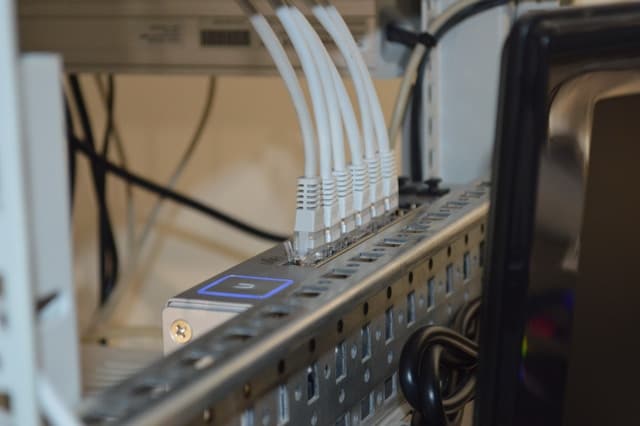What Advances Are Being Made in Energy-Harvesting Technologies for Wireless Computer Accessories?

Advancements in technology have been pushing boundaries and redefining possibilities for years. One such area experiencing transformation is energy-harvesting technology. This is particularly so for wireless computer accessories. We are witnessing the birth of new devices that are no longer wholly dependent on traditional power sources. Instead, these gadgets are harnessing power from their surroundings.
An Overview of Energy-Harvesting Technology
Energy-harvesting technology is an innovative approach to power generation. Rather than relying on conventional power sources like electricity or batteries, this tech harvests energy from the environment. This could be light, heat, radio waves, or even vibration. It then stores this harvested energy for use in electronic systems.
Sujet a lire : What Innovations in Battery Technology Are Extending the Life of Portable Computers?
The applications of this technology are vast, from wearable systems to wireless sensors and data storage devices. The success of such systems relies on their ability to monitor the harvested energy and control its usage efficiently. This is where advances in sensor and system design come into play.
Applications of Energy-Harvesting in Wireless Computer Accessories
Today, energy-harvesting technology is making significant strides in wireless computer accessories. By using energy-harvesting devices, we can power items such as keyboards, mice, headsets, and other peripherals without the need for batteries or cords. This not only improves their convenience but also their sustainability.
A lire en complément : How Are AI-Powered Personal Assistants Evolving to Manage Home Automation?
A key application of this technology in wireless devices is through kinetic energy harvesting. Here, the mechanical energy from your keystrokes or mouse clicks is converted into electrical energy. This is then stored and used to power the device. Another example is solar powered peripherals, which harvest light energy when exposed to sunlight or even artificial light.
The Role of Sensors in Energy-Harvesting Systems
Sensors play a crucial role in energy-harvesting systems. They monitor and control the amount of harvested energy, ensuring efficient usage. This cuts down on power wastage and boosts the overall performance of the device.
Advancements in sensor technology are also contributing to the development of more efficient energy-harvesting systems. These sensors are being designed to operate at very low power levels, further reducing the energy needs of the system. High-performance sensors are also being developed for their ability to harvest energy from a wider range of sources.
Wireless Communication and Energy-Harvesting Technology
Wireless communication is another critical aspect of energy-harvesting technology. It enables the communication between different parts of the system, ensuring the smooth operation of the device.
Innovations in wireless technology are paving the way for better communication in energy-harvesting systems. For example, advancements in communication protocols allow for the efficient transfer of energy and data within the system. This results in an enhanced performance and user experience.
Future Prospects of Energy-Harvesting Technologies
With the rapid advancements in energy-harvesting technology, the future looks promising. We can expect to see more wireless computer accessories that are entirely powered by harvested energy. This not only makes these devices more convenient to use, but also reduces their environmental impact.
One area of future development is the integration of energy-harvesting technology with other emerging technologies like IoT and AI. This could lead to the creation of smart devices that are self-powered and can operate autonomously.
The future of energy-harvesting technology holds immense potential. Its integration with wireless computer accessories is just the tip of the iceberg. As this technology continues to evolve, it will undoubtedly revolutionize the way we power our electronic devices.
Energy Storage and Management in Energy-Harvesting Technologies
An essential aspect in the realm of energy-harvesting technology is energy storage. Energy storage systems ensure that the harvested energy is available for use when needed. It guarantees seamless operation of wireless computer accessories, even when the primary energy source is unavailable.
Advancements in energy storage technologies have led to the creation of more efficient and compact energy storage systems. These systems are designed to store and manage the harvested energy optimally. This ensures that the power consumption of the device is kept to a minimum. They also play a vital role in condition monitoring, ensuring the safety and longevity of the device in real time.
A key development in this field is the design of hybrid energy storage systems. These systems can manage energy derived from multiple energy sources, such as light and heat. This versatility allows wireless computer accessories to tap into various energy sources to meet their power needs.
Additionally, the idea of supercapacitors is gaining traction. Supercapacitors are energy storage devices that can store large amounts of energy and release it swiftly. They have a much longer life cycle than traditional batteries, making them a more sustainable choice.
Moreover, the use of nano-materials in energy storage has also been explored. Nano-materials, due to their small size and high surface area, can store more energy than their larger counterparts. This leads to an increase in the efficiency of the energy storage system, ensuring wireless computer accessories can function optimally with reduced power consumption.
Energy-Harvesting Technologies and the Internet of Things
Energy-harvesting technologies have found a significant ally in the Internet of Things (IoT). The IoT, with its interconnected web of smart devices, presents an immense opportunity for energy-harvesting devices.
Wireless sensors, a key component in IoT systems, can greatly benefit from energy-harvesting technology. Sensor networks, for instance, which are an integral part of smart cities, could be powered by harvested energy. This would drastically reduce their dependence on traditional power sources and lower their overall energy consumption.
Moreover, the human body itself can serve as a source of power. With the emergence of wearable technology, energy harvesting from the human body’s heat or motion energy could power devices like smartwatches or fitness trackers.
Google Scholar is replete with studies on integrating energy-harvesting technologies with IoT. This combination could lead to the creation of self-powered systems capable of operating in real time with minimal human intervention. The possibilities are endless, from smart homes that manage their energy usage, to complex industrial systems that monitor and adapt to conditions on the fly.
The potential application of energy-harvesting technology extends to almost every field. For instance, in healthcare, it could power vital sign monitoring devices. In agriculture, it could power soil moisture sensors. In both cases, the devices would be self-powered, reducing the burden on energy resources and making the systems more sustainable.
Conclusion
In conclusion, energy-harvesting technology has the potential to redefine how we power our wireless computer accessories. The developments in energy storage, sensor technology, wireless communication, and integration with IoT and AI are laying the groundwork for a future where devices are self-powered and sustainable.
The focus on reducing power consumption and increasing efficiency is pushing the boundaries of what we can achieve with this technology. From self-powered keyboards and mice to complex sensor networks in smart cities, energy-harvesting technology is poised to revolutionize power usage in electronic systems.
While the journey to a fully self-powering world might still be a long one, the strides we’re making today are significant. The future is bright, and as we continue to innovate and push the boundaries, we edge closer to a world where the term "battery life" could become a thing of the past.
